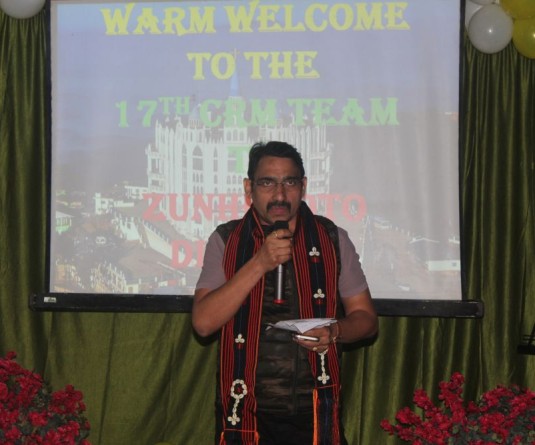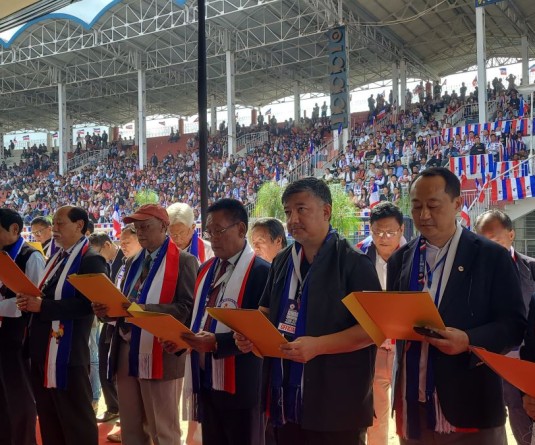
Morung Express News
August 31
DIMAPUR: The origin of the word ‘Morung’ used by the Nagas to mean the traditional educational institution of early Nagas’ bachelors dormitory, has been traced to the Konyak Nagas and not an Assamese word as hitherto widely believed.
This significant finding surfaced from a research by a cultural scholar A. Yanang Konyak from Tizit, Mon district. Konyak had presented his paper ‘Morung of the Konyaks’ at the second and final day of the two-day seminar, August 31, organized by the North East Zone Cultural Centre (NEZCC) Dimapur, and accordingly put into a resolution by scholars and researchers in attendance at the occasion. The resolution adopted at the seminar by eminent cultural personalities and intellectuals both from the State as well as from several other states from the North East, resolved in a formal declaration that the word ‘Morung’ is not an Assamese term but Naga originating from the dialect of the Konyak Nagas. The scholar presenting his findings said that the word ‘Morung’ was derived from an inadvertent misinterpretation which gave rise to the word. According to the findings based on documentary proof, there existed an Ahom Prince by the name of Gadapani, also called Gadathor Hingha (1681-1696) who took refuge in the Naga Hills when Laluk Bora Pukhan who claimed the Ahom throne plotted to murder the former. During his exile, Gadathor Hingha took membership in a Naga bachelors’ dormitory and in course of time married a Konyak Girl called Watlong (also known as Dalimi and after whose memory the present name of Naginimora was given).Following the matrimonial alliance, the Ahoms of Sivasagar frequently visited the Konyak villages and settlements. The Ahoms in their visits observed Konyak dormitories resembling the ‘Rangghars’ (out buildings or dormitories) in Sivasagar, Assam. The Ahoms then enquired if the dormitories belong to the Konyaks to which the Nagas answered “Mor-rang hoi” (“yes, my dormitory” [or house). The Konyaks thought ‘Rang’ in Ahomia meant ‘dormitory’ while the Ahoms on the other hand thought ‘Mor-rang’ (‘Mor’-My, ‘Rang’ -dormitory/ house) was the actual term Konyaks used to call their dormitories. Hence, the word ‘Morung’ took root and since then became the common word for bachelors’ dormitory in Naga.
A. Yanang Konyak said that in conclusion ‘Morung’ was originally a Konyak word derived from the ‘misinterpreted’ word ‘Mor-rung’ to mean ‘my dormitory’. In his paper Konyak also stated that he undertook research and contacted people from the other states particularly of the plains. In the course of his research he found that neither does the Assamese have a Morung system in their society nor the word ‘Morung’ in their lexicon or dialects.






